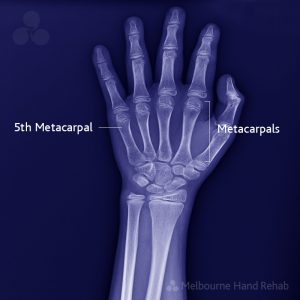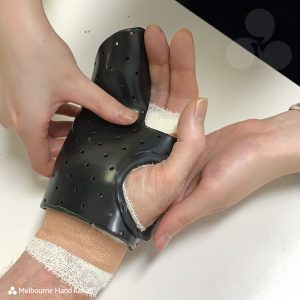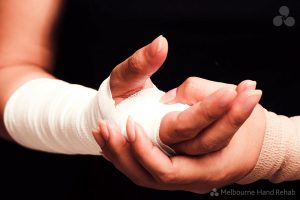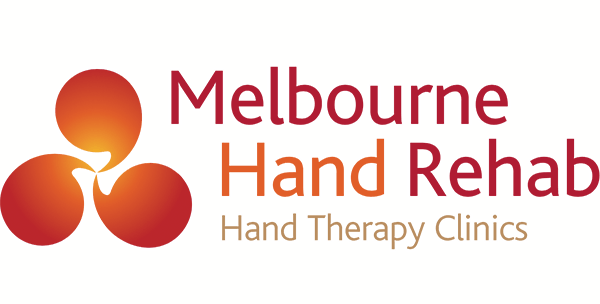
04 Jul What is a boxer’s fracture?
If you’ve ‘broken’ your pinky finger, you might have what is known as a boxer’s fracture.
A boxer’s fracture is a fracture of the neck of the 5th metacarpal, but is also widely known as a boxer’s fracture as it usually happens when you punch an object at a high speed.
If you’re wondering what the difference is between a ‘bone fracture’ and a ‘broken bone’ – a fracture is the medical term for a broken bone, but essentially they are the same injury and mean the same thing.

Symptoms of a boxer’s fracture include:
- Pain and swelling of the hand
- Limited range of motion of the pinky finger
- Misalignment of the finger
Conservative vs surgical treatment
Depending on the punching force, the bone may end up in multiple pieces or become significantly displaced resulting in a deformity. This will therefore determine whether the fracture can be treated conservatively versus surgically. Your doctor will generally request you to have an x-ray to help determine your treatment plan.
Conservative or non-surgical treatment generally involves fracture reduction, where the bone fragments are put back into place, followed by immobilisation through a custom-made hand-based splint and buddy taping, or the taping together of a fractured digit with a healthy one next to it (most likely the pinky and ring fingers) to help prevent malrotation of the pinky.
Splints are often required to be worn full-time for several weeks as directed by your therapist to allow the fracture to heal in an optimum position so it is very normal to have a stiff hand and/or wrist when in the splint. Over the weeks your therapist will monitor the bone healing and commence gradually weaning off the splint once the ‘glue’ between the bone becomes stronger. In the later stages of recovery, exercises to help with improving range of motion and strengthening will be prescribed and tailored to your needs.

Ulnar gutter splints are often used to immobilise fractures of the 4th and 5th metacarpal.
Fracture healing stages
Inflammation: The fracture triggers an inflammatory response, eliciting migration of immune cells to the site. These cells remove debris, bacteria, and damaged tissue, creating a clean environment for healing
Soft callus formation: Within a few days, cells called fibroblasts begin to produce collagen, a protein that forms a soft callus bridging the fracture site. This soft callus stabilises the broken bone fragments and serves as a scaffold for subsequent healing.
Hard callus formation: Over several weeks, specialised bone-forming cells called osteoblasts start depositing minerals, such as calcium and phosphorus, onto the collagen framework. This process gradually converts the soft callus into a hard callus, made of woven bone.
Remodelling: Over a period of several months to years, the hard callus is remodelled into mature, compact bone. Osteoclasts, cells responsible for bone resorption, remove excess bone material, while osteoblasts deposit new bone in a way that aligns with the bone’s original structure. This remodelling process restores the bone’s strength and shape.
Surgical intervention is often resorted to if the fracture is too displaced or significant malrotation of the bone. Upon reviewing the xray images and finger presentation, your GP/hand therapist may refer you to a surgeon for an opinion. If surgery is required, the surgeon will realign and stabilise the affected bone or bones, using wires, screws, pins, or plates, depending on the nature and extent of the damage.

Liz’s quick 10 step guide if your fracture needs to be surgically managed
- Broken bone
- Get a referral from the surgeon
- Surgeon appointment, book in surgery
- After surgery see your Hand Therapist at Melbourne Hand Rehab
- Get a splint
- Wound checks
- Start prescribed finger exercises
- Commence strengthening exercises
- Return back to sports/ work.
Melbourne Hand Rehab therapists are able to help provide conservative management treatment and post surgery care to help provide you with the best recovery outcome. Our hands are essential to our everyday life so if you are concerned about a boxer’s fracture, please get in touch with our lovely team.
If you are experiencing finger, hand or wrist pain, don’t hesitate to get in touch. We’d love to help you.
BOOK AN APPOINTMENT
For more information, call us directly on 03 9458 5166



